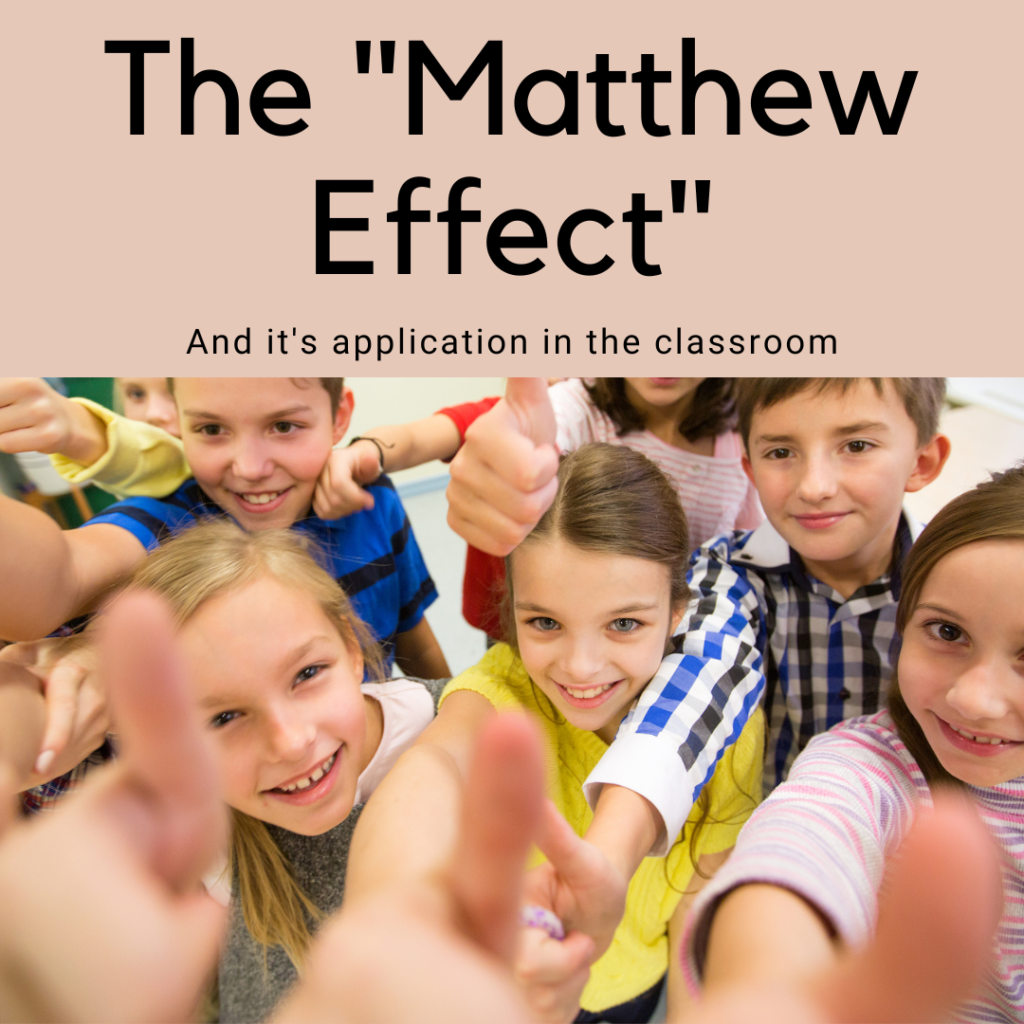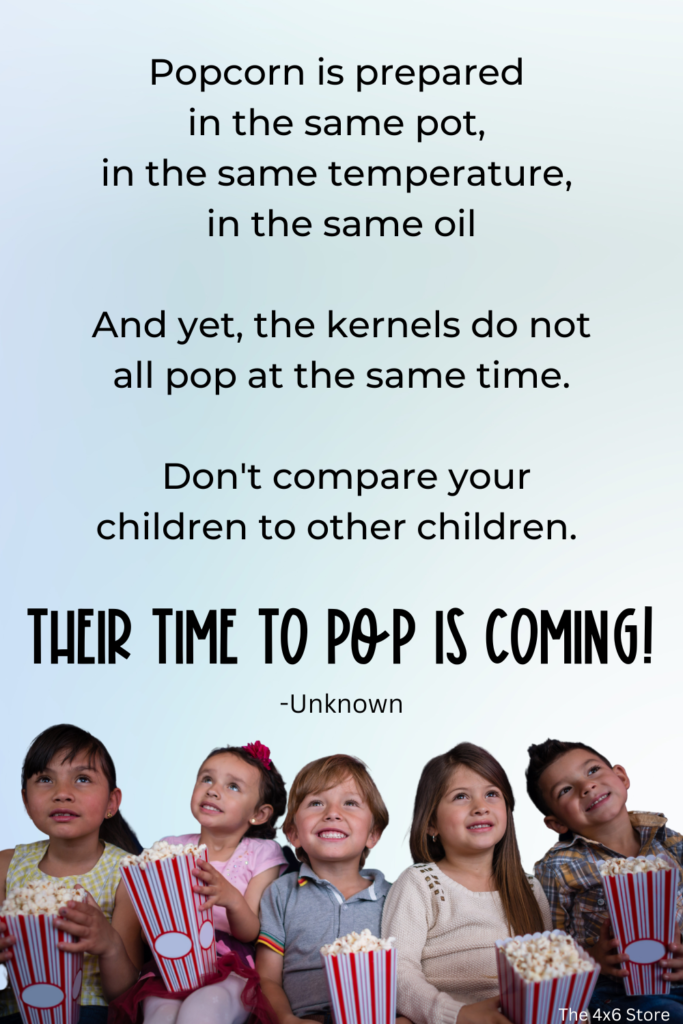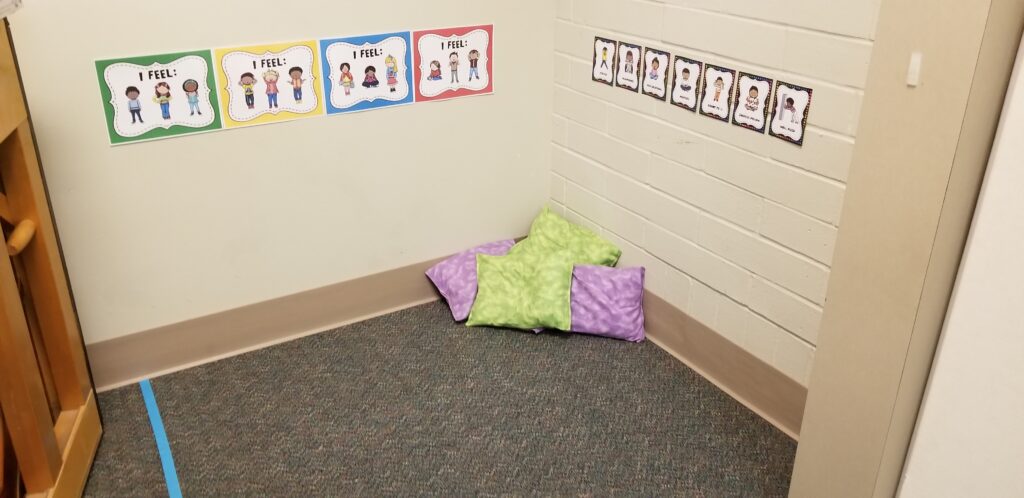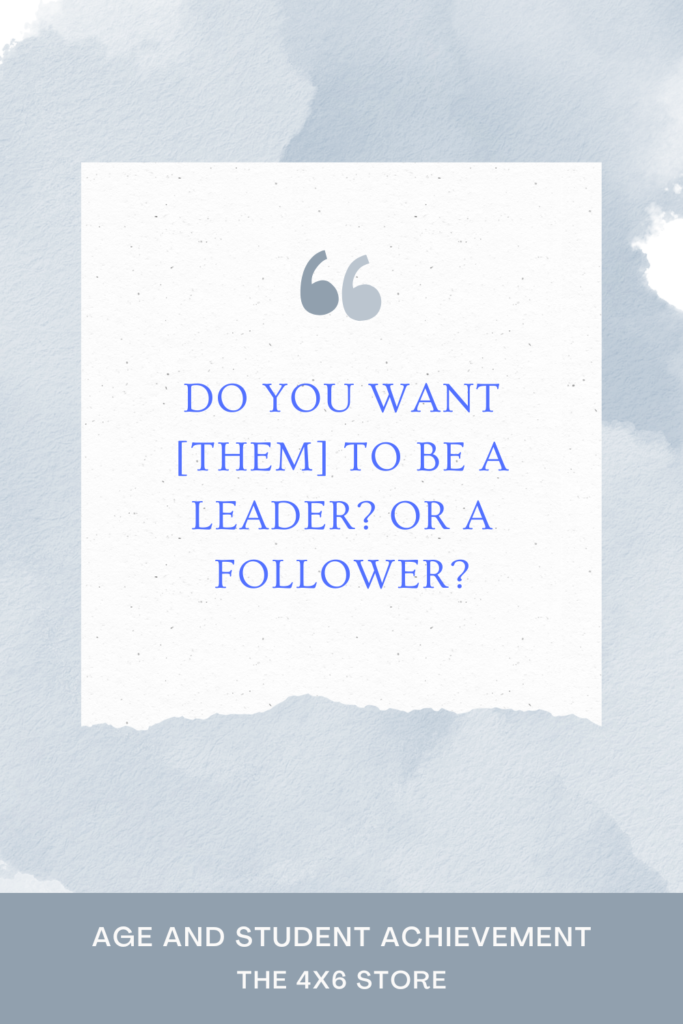Age as a Factor of Behavior and Academic Achievement
I recently took a professional development course focused around the book “Outliers” by Malcolm Gladwell (5 Stars – would recommend!). We were asked to read it through the lense of factors that influence how our students act and succeed within the classroom. It has been very interesting to see age as a factor of behavior and academic achievement in school.
Between my own experience as a student and now as a teacher, I truly believe this is a real factor that educators deal with on a daily basis that may not even be given much consideration in the “big picture.”
The Matthew Effect in Education
“The Matthew Effect,” named by Robert Merton after the parable of the talents in the Bible, essentially can be summarized as: those who have more, (ie. more opportunities, fame, ability, experience) continue to get more, while those who don’t, fall further and further behind those who do. Or, those who have an advantage continue to get more advantage, and those who are disadvantaged, remain disadvantaged.
Research has shown that the Matthew Effect is present in education.1 One factor indicating this effect is a child’s age compared to the age of their peers. Elementary students who are younger than their peers have shown in different studies to score lower than their older classmates. But, also note that some studies indicate the age factor decreases over time and is not usually seen by the time student’s reach high school.

While it is comforting to know the gap has a chance of closing, what does it mean for those formative elementary years? Educators constantly have statistics thrown at them about the correlation between literacy rates and crime,2 the drive to use education to lift students from poverty, and so forth. If age as a factor of behavior and academic achievement, what can elementary teachers can do to help mitigate the gap? How can we help younger students “at an age disadvantage” stay engaged and enthusiastic about learning?
What Can Be Done?
Factors promoting advantages and disadvantages will always be found in any classroom, work environment, or life in general! Despite the stark reality that there are also inherent advantages and disadvantages beyond a single teacher’s control, we often have to take a step back and ask , “What CAN I control. What can I do in my classroom?”
Some general suggestions are:
- Recognize age, developmental ability, and social differences in students and tailor your instruction accordingly.
- Provide all students with opportunities, especially those opportunities promoting feelings of being successful (academic or not!).
- Realize top students may not be “the brightest,” but have had more experience to demonstrate and refine the assessed academic skills.
- Create an environment that allows all students to thrive despite ability level.
- Use interventions that are age and developmentally appropriate, especially for younger students.
- Instill confidence in students who appear to be “behind” by reminding them everyone “gets there” in their own way and time.

Application to My Classroom
This year, I teach four sections of music to kindergarten students. While I am not involved (directly) with teaching reading and math skills, I feel like the application is still relevant.
I have worked with kindergarten students since 2010 and feel pretty comfortable with understanding the developmental and academic levels of students this age. Three of these classes I work with seem to fit the “typical” kindergarten mold. However, my fourth section of kindergarten still had me scratching my head (and wanting to pull out my hair) at Christmas. I couldn’t figure out why this class in particular was so different from all the other classes I have worked with.
While completing my assignment for “The Matthew Effect” chapter in Outliers, I had a thought. “I wonder how the birthdays in this class pan out compared to the others.” And guess what! Compared to my other three sections, this class had a disproportionate number of younger kindergarteners! (For reference, the other classes were about 50-50 for having 2016/2017 birthdays. This class only had *three* 2016 birthdays.) It made sense why I had more tears, inability to stay on task, and the oh-so-impossible task of keeping their hands to themselves! They, as a whole, were just a little less mature due to their age!
Finding What Works
My entire perspective on this class changed once I realized that age was a factor to their collective behaviors! I have changed my teaching style with this class slightly to accommodate more wiggles, activities requiring a shorter attention span, and need for time and space to regulate emotions. I created a “Quiet Island” for them to take a breather when needed with calming strategies posted on the wall. (They use it WAY more than my other classes do!) I break up my instruction time more, and often modify an activity for a smoother class period. I am continuing to try to find different strategies for my “frequent fliers” to Quiet Island to keep them engaged and well-regulated. (And will happily take suggestions in the comments!)

What happens in YOUR classroom is entirely up to you. But being aware of age as a factor of behavior and academic achievement is something to keep in mind! Perhaps your young kindergarten students who are struggling with number recognition don’t need more drilling – they need more exposure to numbers through play – because that is where they are developmentally!
My Personal Story
I have an early August birthday. In my hometown growing up, I was well within the deadline for attending school at 5. However, unknown to my parents, most people in our small town decided to send their kindergarteners to school when they were closer to 6 or already 6. Long story short, I did not thrive once I moved to first grade. My recesses were filled with interventions and my nights with makeup packets. I HATED school. I struggled academically and socially far behind my peers. It was bad enough that in October, a team of teachers considered putting me back into kindergarten. When my mom asked for the kindergarten teacher’s opinion, she just responded, “Do you want her to be a leader? Or a follower?”

This kindergarten teacher understood age as a factor of behavior and academic achievement through her many years experience. She understood the lasting academic impact and social success in the classroom older students typically experience. I am forever thankful that my parents made the choice to put me back into kindergarten for another year! After attending a second year of kindergarten, I absolutely thrived in school and was viewed as a very socially mature teenager throughout middle and high school. I thank my parents and teachers for understanding that that gap would likely only widen as I went through my school years.
Last Thoughts
In our classrooms, by virtue of how districts and schools continue to group students, we are going to have students that are younger and older. And there will be younger students who thrive and excel socially despite their age! Age isn’t the only factor. But perhaps knowing age can be a factor, we as educators can reframe how we see struggling students.
And for summer birthday parents, perhaps this has helped provide insights for the the age old question: “Do I send them, or wait a year?” At the end of the day – YOU know your child the best! (Psychology Today also has a great article on this!)
There are also SO many external factors and forces that drive success and student achievement. Please take that into consideration. Age is only one of them – but a very interesting one.
